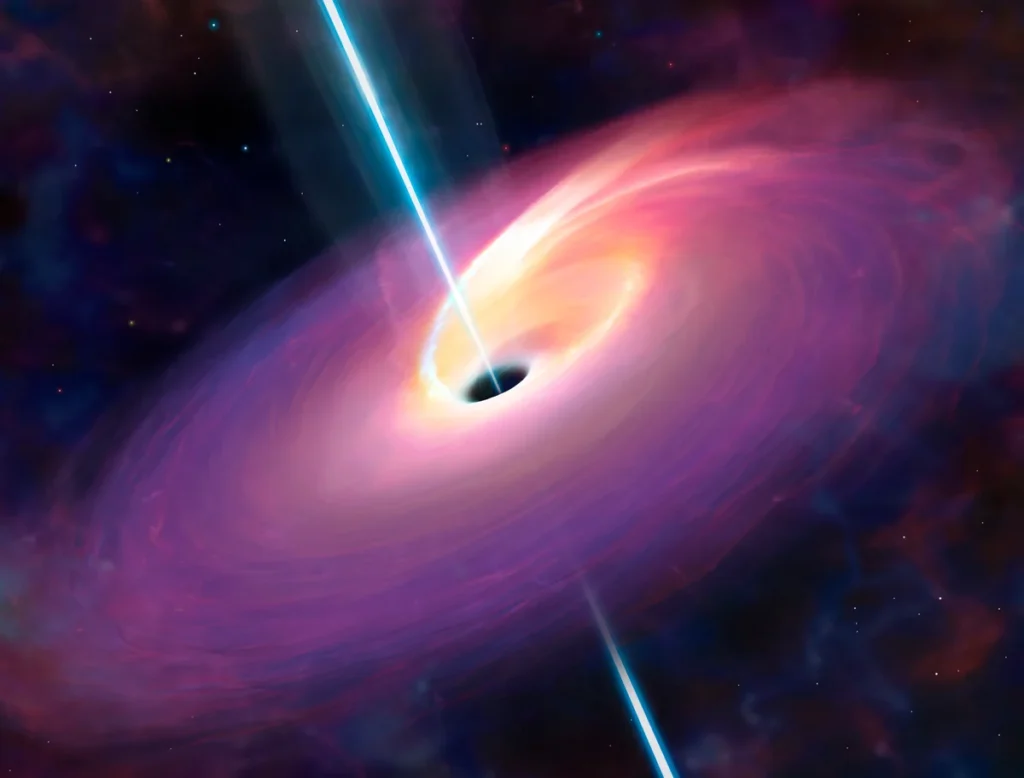
Introduction
Black holes have captivated humanity for decades, representing the ultimate cosmic paradox: objects so dense that not even light can escape their gravitational grip. Yet, their cores remain one of the universe’s greatest enigmas. Recent breakthroughs in quantum computing and machine learning are finally peeling back the curtain on what lies at the heart of these cosmic giants. In this blog, we explore how scientists are decoding black holes, bridging quantum mechanics and gravity, and rewriting the rules of physics.
The Black Hole Mystery: What Lies Beyond the Event Horizon?
Black holes form when massive stars collapse under their own gravity, creating a singularity—a point of infinite density—surrounded by an event horizon. Beyond this boundary, the laws of physics as we know them cease to function. For decades, physicists have debated whether black holes destroy information (violating quantum mechanics) or store it somehow.
The holographic principle offers a tantalizing clue. Proposed in the 1990s, it suggests that all information within a 3D black hole is encoded on its 2D surface, like a hologram. This theory bridges quantum mechanics (governing particles) and general relativity (describing gravity), two frameworks that have stubbornly resisted unification.
Quantum Computing Cracks the Code
A team led by physicist Enrico Rinaldi at the University of Michigan has leveraged quantum matrix models—simplified quantum simulations—to probe black hole interiors. Using quantum circuits (algorithms run on quantum computers), they’ve mapped the “ground state” of these systems—the lowest-energy configuration that dictates the behavior of particles inside a black hole.
How Quantum Computing Helps
- Qubits and Superposition: Unlike classical bits (0 or 1), qubits exist in multiple states simultaneously, enabling parallel processing of vast datasets.
- Quantum Circuits: These algorithms simulate particle interactions under extreme gravity, revealing patterns invisible to classical computers.
- Machine Learning Optimization: Neural networks fine-tune simulations, identifying the most probable ground state from trillions of possibilities.
Rinaldi compares this process to composing music: “Each qubit is a note, and quantum gates are the musical operations. We’re ‘shaking’ the system until we find the right melody—the ground state.”
The Holographic Principle: A 2D Map of a 3D Mystery
The holographic principle posits that our 3D universe (including black holes) could be a projection of information stored on a 2D surface. This idea stems from string theory and has gained traction as simulations show quantum particles on a black hole’s surface correspond to gravitational effects in its interior.
Key Findings
- Quantum Entanglement: Particles on the event horizon are entangled with those inside, creating a “quantum fabric” that links gravity and particle physics.
- Information Preservation: Simulations suggest information isn’t lost but redistributed across the holographic surface.
- Space-Time Emergence: Gravity and space-time may arise from quantum interactions, not the other way around.
Why This Matters: Toward a Theory of Quantum Gravity
Einstein’s general relativity and quantum mechanics have remained irreconcilable for over a century. Black holes—where both theories collide—are the perfect testing ground for a unified theory.
Implications of This Discovery
- Solving the Information Paradox: If information is preserved holographically, it resolves Stephen Hawking’s famous paradox.
- New Physics: Uniting gravity and quantum mechanics could explain dark matter, dark energy, and the Big Bang.
- Technological Spin-Offs: Quantum algorithms developed here may advance cryptography, materials science, and AI.
Challenges and the Road Ahead
While promising, the research faces hurdles:
- Quantum Hardware Limitations: Current quantum computers (like IBM’s or Google’s) have <1,000 qubits—too few for full-scale simulations.
- Interpretation Gaps: Mapping matrix models to real black holes requires further theoretical work.
- Experimental Validation: Without direct observational data, scientists rely on indirect evidence from gravitational waves or particle accelerators.
FAQs
Q: Can we ever observe a black hole’s core?
A: Direct observation is impossible (light can’t escape), but simulations and gravitational wave data provide indirect clues.
Q: How does this affect everyday life?
A: While abstract now, quantum computing advances could revolutionize tech industries, medicine, and energy.
Q: Does this prove string theory?
A: Not yet, but it supports ideas like the holographic principle, which is rooted in string theory.
Conclusion
The marriage of quantum computing and black hole physics marks a paradigm shift in our cosmic understanding. By decoding the holographic whispers of black holes, scientists aren’t just solving a century-old puzzle—they’re rewriting the rules of reality itself. As quantum technology evolves, we inch closer to answering humanity’s oldest question: What is the universe made of?
1 thought on “Black Hole Secrets: How Quantum Computing Is Unlocking the Universe’s Greatest Mystery”
Comments are closed.